
DW650LAG, DW90LAG, DW13LAG
Engines
INSTRUCTION MANUAL

2
English
Components (Fig. 1)
A. Fuel cap (if equipped)
B. Fuel tank (if equipped)
C. Oil fill/dipstick
D. Oil drain
E. Crank shaft PTO
F. Air filter
G. On/Off switch (if equipped)
H. Set throttle control
I. Choke lever
J. Fuel valve (if equipped)
K. Recoil pull starter
L. Carburetor bowl drain
M. Carburetor bowl
N. Carbon canister (if equipped)
O. Low oil shutdown sensor
P. Debris Screen (if equipped)
Hot Surfaces (Fig. 1)
Q. Cylinder head
R. Muffler (if equipped)
S. Spark Arrestor (if equipped)
T. Spark plug
U. Pilot valve connection (if equipped)
V. Valve cover
FIG. 1
H
I
J
K
C
B
A
D
E
G
O
P
V
F
Q
L
M
N
S
R
U
T

3
English
Defi nitions: Safety Guidelines
The definitions below describe the level of severity
for each signal word. Please read the manual and pay attention
to these symbols.
DANGER: Indicates an imminently hazardous situation
which, if not avoided, will result in death or serious injury.
WARNING: Indicates a potentially hazardous situation which,
if not avoided, could result in death or serious injury.
CAUTION: Indicates a potentially hazardous situation which, if
not avoided, may result in minor or moderate injury.
CAUTION: Used without the safety alert symbol indicates a
potentially hazardous situation which, if not avoided, may result
in property damage.
Important Safety Instructions
Important Safety Instructions
SAVE THESE INSTRUCTIONS
– This manual contains important
– This manual contains important
instructions for models DW650LAG, DW90LAG, DW13LAG that
instructions for models DW650LAG, DW90LAG, DW13LAG that
should be followed during installation and maintenance of the
should be followed during installation and maintenance of the
engine.
engine.
DANGER: Carbon Monoxide. Using an engine indoors will
kill you in minutes. Engine exhaust contains high levels of
carbon monoxide (CO), a poisonous gas you cannot see or
smell. You may be breathing CO even if you DO NOT smell
engine exhaust.
• NEVER use an engine inside homes, garages, crawlspaces, or
other partly enclosed areas. Deadly levels of carbon monoxide
can build up in these areas. Using a fan or opening windows and
doors does NOT supply enough fresh air.
• ONLY use outdoors and far away from open windows, doors
and vents. These openings can pull in engine exhaust.
• Even when the engine is used correctly, CO may leak into your
home. ALWAYS use a battery-powered or battery backup CO
alarm (not supplied) in the home. Read and follow all direc-
tions for CO alarm before using. If you start to feel sick,
dizzy or weak at anytime, move to fresh air immediately. See a
doctor. You could have carbon monoxide poisoning.
WARNING: Do not operate this unit until you read and understand
this instruction manual and the tool instruction manual for safety,
operation and maintenance instructions.
SAVE THESE INSTRUCTIONS
DANGER: RISK OF EXPLOSION OR FIRE
WHAT CAN HAPPEN HOW TO PREVENT IT
• Spilled gas o line and it’s
vapors can be come ignited
from sparks from smoking
products, electrical arcing,
exhaust, flame, gas es and
hot engine components such
as the muffler.
• Shut off en gine and allow it to
cool before removing cap and
adding fuel to the tank.
• Use care in fill ing tank to avoid
spill ing fuel. Make sure the
cap is secure and move unit
away from fueling area before
starting en gine.
• Heat will ex pand fuel in the
tank which could result in
spillage and pos si ble fire
explosion.
• Keep maximum fuel level
below the shoulders on the
debris screen
to allow for
expansion.

4
English
• Non-functioning or missing
spark-arresting muffler may
cause fire.
• Make sure spark-arresting
muffler is in place and not
damaged.
• Replace spark-arresting
muffler if damaged
or missing.
• Combustible materials
which come into contact
with hot engine parts can
become ignited.
• Add fuel outdoors in a well
ventilated area. Make sure
there are no sources of
ignition, such as smoking
products near refueling
location.
• Operate engine in a clean,
dry, well ventilated area a
minimum of 48" (1.2 m) from
any building, object or wall.
Do not operate unit indoors
or in any confined area.
• Operate engine in an open
area away from dry brush,
weeds or other combustible
materials
.
• Improperly stored fuel could
lead to acciden tal ignition.
Fuel im prop er ly secured
could get into the hands of
children or oth er un qual i fied
persons.
• Store fuel in an OSHA-
ap proved con tain er, in a
se cure location away from
work area.
• Unattended operation
of this product could
result in personal injury
or property damage. To
reduce the risk of fire, do
not allow the engine to
operate unattended.
• Always remain in attendance
with the engine when it is
operating.
DANGER: RISK TO BREATHING (ASPHYXIATION)
WHAT CAN HAPPEN HOW TO PREVENT IT
• Breathing ex haust fumes
will cause se ri ous injury or
death!
Engine exhaust con-
tains high levels of carbon
monoxide (CO), a poison-
ous gas you cannot see or
smell. You may be breath-
ing CO even if you do not
smell engine exhaust.
• NEVER use an engine inside
homes, garages, crawlspaces
or other partly enclosed
areas. Deadly levels of carbon
monoxide can build up in
these areas. Using a fan or
opening windows and doors
does NOT supply enough
fresh air.
• Only use outdoors and far
away from open windows,
doors and vents. These
openings can pull in engine
exhaust.
•
Keep children, pets and others
away from area of operation.
• Always keep the exhaust
pipe free of foreign object

5
English
DANGER: RISK OF INJURY OR PROP ER TY DAMAGE
WHEN TRANSPORTING OR STORING
WHAT CAN HAPPEN HOW TO PREVENT IT
• Oil and fuel can leak or spill
and could result in fire or
breathing hazard; serious
injury or death can result.
Oil and fuel leaks will damage
carpet, paint or other surfaces
in vehicles or trailers. Spilled
oil and fuel increases risk of
injury.
• Never transport engine with
fuel in the fuel system, fuel
valve open, or while engine is in
operation.
• Always place engine on
a protective mat when
transporting to protect against
damage to vehicle from leaks.
Remove engine from vehicle
immediately upon arrival at your
destination. Always keep engine
level and never lie on its side.
• Transport fuel only in an OSHA
approved container.
WARNING: RISK OF HOT SURFACES
WHAT CAN HAPPEN HOW TO PREVENT IT
• Touching exposed metal
(muffler and other engine
parts) can result in serious
burns.
• Never touch any exposed
metal parts on engine during
or immediately after operation.
The engine will remain hot
for several minutes after
operation.
• Do not reach around
protective shrouds or attempt
maintenance until engine has
been allowed to cool.
WARNING:
RISK FROM MOVING PARTS
WHAT CAN HAPPEN HOW TO PREVENT IT
• The engine can start
accidentally if the flywheel is
turned by hand or moved by
pulling on the pull starter.
• Always disconnect the spark
plug before performing
maintenance.

6
English
• Moving parts such as the
pulley, flywheel, and belt can
cause serious injury if they
come into contact with you
or your clothing.
• Never operate the
engine
with
guards or covers which are
damaged or removed.
• Keep your hair, clothing, and
gloves away from moving parts.
Loose clothes, jewelry, or long
hair can be caught in moving
parts.
• Air vents may cover moving
parts and should be avoided
as well.
• Attempting to operate engine
with damaged or missing
parts or attempting to repair
engine with protective
shrouds removed can expose
you to moving parts and can
result in serious injury.
• Any repairs required on this
product should be performed
by a
DEWALT factory
service center or a D
EWALT
authorized service center.
WARNING: RISK OF UNSAFE OPERATION
WHAT CAN HAPPEN HOW TO PREVENT IT
•
Unsafe op er a tion of your
engine could lead to
se ri ous in ju ry or death
to you or others.
•
Review and understand all
instructions and warnings in
this manual.
•
Be come fa mil iar with the opera-
tion and con trols of the engine.
• Keep operating area clear of all
persons, pets, and obstacles.
• Keep chil dren away from the
engine at all times.
• Do not operate the engine
when fatigued or under the
influence of alcohol or drugs.
Stay alert at all times.
• Never defeat the safety
fea tures of this prod uct.
• Equip area of operation
with a fire extinguisher.
• Do not op er ate engine
with missing, broken, or
un au tho rized parts.
• Never stand on the engine.

7
English
CAUTION: RISK FROM NOISE
WHAT CAN HAPPEN HOW TO PREVENT IT
•
Under some conditions,
applications and duration of
use, noise from this product
may contribute to hearing
loss.
•
ALWAYS
wear certified
safety equipment: ANSI S12.6
(S3.19) hearing protection.
SAVE THESE INSTRUCTIONS
ASSEMBLY
WARNING: Do not operate this unit until you read and understand
this instruction manual as well as the product instruction manual for
safety, operation and maintenance instructions.
This engine is only for use in D
EWALT approved applications. If used
in unapproved applications, D
EWALT is not responsible for repairs or
damage and the warranty is void.
To mount engine correctly, refer to set-up instructions in shop
manual.
CAUTION:
The engine
IS NOT
filled with oil from the factory. Oil
must be added to the engine before operating or damage to engine
may occur.
Oil Recommendations
SAE 10W-30 is recommended for general use. Refer to the
Viscosity-Ambient Temperature Chart for recommended oil within
your local area’s average temperature range.
NOTE: Synthetic oil is NOT recommended.
˚F -20 0 20 40 60 80 100
˚C -28.8 -17.7 -6.6 4.4 15.5 26.6 37.7
5W-30
10W-30
30
VISCOSITY-AMBIENT TEMPERATURE CHART
TO ADD OIL (FIG. 1)
1. Refer to Viscosity-Ambient Temperature Chart above for correct
viscosity.
2. Remove dipstick.
3. Slowly add recommended oil, see specifications for oil capacity.
NOTE: If the oil is added too quickly, it will overflow and appear
to be full.
See To Check Oil under Maintenance for instructions.
TO ADD FUEL
WARNING: Risk of explosion or fire. Gasoline vapor is highly
flammable. Refuel outdoors only in well-ventilated areas. Do not
refuel or check gasoline level while the engine is running. Do not
store, spill or use gasoline near an open flame,
A
B
a source of sparks (such as welding) or near
operating electrical equipment.
1. Remove fuel cap (A).
2. Add fresh, clean, regular unleaded gasoline
with a minimum of 86 octane to the fuel

8
English
tank (B). Do not fill above the shoulders on the debris screen
(P) as shown. NOTE: The debris screen protects the engine
from dirt and debris, only remove screen when cleaning. See
Cleaning Debris Screen under Maintenance for instructions.
NOTE: Do not mix oil with gasoline.
3. Replace the fuel cap on the tank. Turn the
P
cap clockwise until it stops.
OXYGENATED FUELS
Some conventional gasolines are blended with alcohol or an ether
compound. These gasolines are collectively referred to as oxygen-
ated fuels.
If you use an oxygenated fuel, be sure it is unleaded and meets the
86 minimum octane rating requirements. Before using an oxygen-
ated fuel, try to confirm the fuel’s contents. Some states/provinces
required this information to be posted on the pump. The following are
the EPA approved percentages of oxygenates:
Ethanol (ethyl or grain alcohol) 10% by volume. You may use
gasoline containing up to 10% ethanol by volume. Gasoline contain-
ing ethanol may be marketed under the name gasohol.
CAUTION: Risk of property damage. DO NOT use E85 fuel.
MTBE (methyl tertiary butyl ether) 15% by volume. You may use
gasoline containing up to 15% MTBE by volume.
Methanol (methyl or wood alcohol) 5% by volume. You may use
gasoline containing up to 5% methanol by volume as long as it also
contains solvents and corrosion inhibitors to protect the fuel system.
Gasoline containing more than 5% methanol by volume may cause
starting and/or performance problems. It may also damage metal,
rubber and plastic parts of the engine or your fuel system.
If you notice any undesirable operating symptoms, try another
service station or switch to another brand of gasoline.
NOTE: Fuel system damage or performance problems result-
ing from the use of an oxygenated fuel containing more than the
percentages of oxygenates mentioned above are not covered under
warranty.
Location
DANGER: Risk of breathing. Exhaust from the gasoline engine
contains deadly carbon monoxide, which is odorless and toxic.
Operate engine only outside in clean, dry, well-ventilated areas.
NOISE CONSIDERATIONS
Consult local officials for information regarding acceptable noise
levels in your area.
Preparation For Use
1. Place unit on level surface.
2. Check engine oil. See
To Check Oil
under
Maintenance
.
CAUTION:
Do not operate engine without oil or with inadequate oil.
D
EWALT is not responsible for engine failure caused by inadequate
oil.
3. Check fuel level.
4. See product manual for specific starting procedures.
NOTE: If any unusual noise or vibration is noticed, stop the engine
and refer to the troubleshooting section as well as the shop
manual.
High Altitude Operating
At high altitude, the standard carburetor air-fuel mixture will be too
rich. Performance will decrease and fuel consumption will increase.
A very rich mixture will also foul the spark plug and cause hard
starting.

9
English
High altitude performance can be improved by specific modifica-
tions to the carburetor. If you always operate your engine at altitudes
above 1,524 meters (5,000 feet), have your authorized service cen-
ter perform a carburetor modification.
Even with a carburetor modification, engine horsepower will decrease
about 3.5% for each 300 meter (1,000 feet) increase in altitude. The
effect of altitude on horsepower will be greater than this if no car-
buretor modification is made. A decrease in engine horsepower will
decrease the power output of the engine.
NOTE: When the carburetor has been modified for high altitude
operation, the air-fuel mixture will be too lean for low altitude use. If
the engine is used at low altitudes after a carburetor modification, the
carburetor may cause the engine to overheat and result in serious
engine damage. For use at low altitudes, have your authorized ser-
vice center return the carburetor to original factory specifications.
MAINTENANCE
WARNING: When cleaning, use only mild soap and a damp cloth
on plastic parts. Many household cleaners contain chemicals which
could seriously damage plastic. Also, do not use gasoline, turpen-
tine, lacquer or paint thinner, dry cleaning fluids or similar products
which may seriously damage plastic parts. Never let any liquid get
inside the engine; never immerse engine into a liquid.
The following procedures must be followed when maintenance or
service is performed on the engine.
Any service operations not included in this section should be performed
by a D
EWALT factory service center or a DEWALT authorized service
center.
This engine is only for use in D
EWALT approved applications. If used
in unapproved applications, D
EWALT is not responsible for repairs or
damage and the warranty if void.
Maintenance Chart
PROCEDURE
Daily
100 hours
50 hours
or weekly
(whichever
comes first)
150 hours
or monthly
(whichever
comes first)
500 hours
Clean air filter (3)
X
Check oil level
X
Change oil (1,2,3)
X
Clean spark plug
X
Clean engine’s exterior
X
Check and adjust valve clearance
(.15 mm intake, .2 mm exhaust) (2)
X
Clean spark
arrester (if equipped)
X
Clean debris screen (if equipped)
X
1. The engine oil must be changed after the first 20 hours of
operation. Thereafter change oil every 150 hours of operation
or monthly, whichever comes first.
2.
See DEWALT shop manual for detail instructions.
3.
Perform more frequently in dusty or humid conditions
Cleaning Air Filter Element (Fig. 1)
WARNING: Hot surfaces. Risk of burn. Engine and surrounding
parts are very hot, do not touch (see the Hot Surfaces identified in
Figure 1). Allow engine to cool prior to servicing.
A dirty air cleaner will restrict airflow to the carburetor. To prevent
carburetor mal func tion, service the air filter regularly. Service more
frequently when operating the engine in extremely dusty areas.

10
English
WARNING: Using gasoline or flam mable solvent to clean the filter
element can cause a fire or explosion.
WARNING: Risk of fire. Do not operate without air filter.
TO CLEAN THE ELEMENTS
1. Remove the wing nut (Y)
Y
X
Y
Y
AA
Z
and the air filter
cover
(X)
.
2. Remove the second wing
nut (Y) and remove the
filter (Z).
3. Remove the foam-type
pre-filter (AA) from the
filter (Z).
4. Inspect foam and paper
elements. Replace them if damaged.
TO CLEAN THE ELEMENTS
Foam element: Wash element in warm, soapy water. Then saturate
it in clean engine oil. Squeeze the element to remove excess oil.
Paper element: Clean element by tapping gently to remove dust.
Use compressed air to blow off dust.
WARNING: When using compressed air, user always must wear
eye protection that conforms to ANSI Z87.1. (CAN/CSA Z94.3).
Never use oil. Always blow the element from the inside. If using com-
pressed air keep the air pressure less than 30 psi.
Place the foam pre-filter over the paper element and reinstall it onto
the engine.
Oil
Warning: Hot surfaces. Risk of burn. Engine and surrounding
parts are very hot, do not touch (see the Hot Surfaces identified in
Figure 1). Allow engine to cool prior to servicing.
TO CHECK OIL (FIG. 1)
1. Place unit on a flat level surface.
2. Remove oil fill/dipstick (C) and wipe clean.
3. Reinsert oil fill/dipstick fully into oil fill port and tighten. Allow oil
to collect on the dipstick for a few seconds.
4. Remove oil fill/
CC
CC
dipstick to read oil
level. If oil falls
below top of pattern
on dipstick, add oil.
NOTE: Patterns
(CC) may differ
according to engine.
NOTE: When filling the crankcase, allow the oil to flow very
slowly. If the oil is added too quickly, it will overflow and appear
to be full.
5. Replace dipstick and tighten securely.
TO CHANGE OIL (FIG. 1)
NOTE: Engine oil contains substances that are regulated and must
be disposed of in accordance with local, state, provincial and federal
laws and regulations.
1. Disconnect spark plug wire.
2. Locate a suitable container under oil drain plug (D).
3. Remove the oil fill/dipstick (C) from crank case.

11
English
4. Remove the oil drain plug (D).
5. Allow ample time for all oil to drain out.
6. Install the oil drain plug.
7. Fill with recommended oil, refer to Oil Recommendations
under Assembly.
8. Replace dipstick and tighten securely.
9. Reconnect spark plug wire.
10. Dispose of oil according to local, state and federal laws and
regulations.
Spark Plug
Use recommended spark plugs, see specifications for correct spark
plug. To ensure proper engine operation, the spark plug must be
properly gapped and free of deposits.
WARNING: If the engine has been running, the muffler will be very
hot. To reduce the risk of injury, allow cooling before proceeding.
1. Remove the spark plug cap.
2. Clean any dirt from around the spark plug base.
3. Use a spark plug wrench (not supplied) to remove the spark
plug.
4. Visually inspect the spark plug. Replace it if the insulator is
cracked or chipped. Clean the spark plug with a wire brush if it
is going to be reused.
WARNING:
Always wear certified safety equipment:
DD
ANSI Z87.1 eye protection (CAN/CSA Z94.3) with side
shields.
5. Measure the plug gap with a feeler gauge (DD).
Correct as necessary by carefully bending the
side electrode. The gap should be: 0.70 –0.80 mm
(0.028 – 0.031 in).
6. Make sure the spark plug washer is in good condition. Thread
the spark plug in by hand to prevent cross threading.
7. After the spark plug is seated, tighten with a spark plug wrench
to compress the washer. If installing a new spark plug, tighten
the spark plug 1/2 turn after it seats to compress the washer.
If reinstalling a used spark plug, tighten 1/8–1/4 turn after the
spark plug seats to compress the washer. Do not overtighten.
8. Securely replace spark plug cap.
NOTE: The spark plug must be securely tightened. An improperly
tightened spark plug can become very hot and could damage the
engine. Never use spark plugs which have an improper heat range.
Use only the recommended spark plugs or equivalent.
Spark Arrester (if equipped)
WARNING: Risk of explosion or fire. DO NOT operate engine
without spark arrestor (S).
WARNING: If the engine has been running, the muffler will be
very hot. To reduce the risk of injury, allow engine to cool before
proceeding.
NOTE: The spark arrester must be serviced every 100 hours to
maintain its efficiency.
1. Remove the spark arrestor screws (EE) and remove the spark
arrestor (S).
S
S
EE

12
English
2. Use brush to remove carbon deposits from the spark arrester
screen. Inspect the spark arrester screen for holes or tears.
Replace the spark arrester if necessary.
WARNING:
Always wear certified safety equipment: ANSI Z87.1 eye
protection (CAN/CSA Z94.3) with side shields when removing carbon
deposits.
Drain Carburetor Bowl (Fig. 1)
1. Place the fuel valve lever (J, if equipped) in the closed position.
2. Place an
OSHA-ap proved con tain er suitable for fuel under the
carburetor bowl (M).
NOTE:
Using a funnel will allow the fuel to flow
into the container with less spillage.
3. Remove the carburetor bowl drain (L).
4. Fuel will drain from carburetor bowl.
5. When drained, replace carburetor bowl drain.
Cleaning Debris Screen (if equipped)
(Fig. 1)
WARNING: Risk of explosion or fire. Gasoline vapor is highly flam-
mable. Refuel outdoors only in well-ventilated areas. Do not refuel or
check gasoline level while the engine is running. Do not store, spill, or
use gasoline near an open flame, a source of sparks (such as weld-
ing), or near operating electrical equipment.
1. Remove fuel cap (A).
2. Remove debris screen (P).
P
A
3.
Clean debris screen. Use compressed
air to blow off debris.
WARNING: When using compressed
air, user always must wear eye protec-
tion that conforms to ANSI Z87.1. (CAN/
CSA Z94.3).
4. Replace debris screen and fuel cap.
Storage
WARNING: If the engine has been running, the muffler will be
very hot. To reduce the risk of injury, allow engine to cool before
proceeding.
If storing the unit for more than thirty days drain all fuel out of fuel
lines, tank and carburetor bowl. Drain oil and refill with fresh, clean
oil. IMPORTANT: Fuel will oxidize and deteriorate in storage. If fuel
is allowed to deteriorate during storage the carburetor and fuel
related parts will need to be serviced. NOTE: Fuel stabilizer can
be used to lengthen the fuel life, follow the fuel stabilizer’s recom-
mended instructions
Troubleshooting Guide
This section provides a list of the more frequently encountered
malfunctions, their causes and corrective actions. The operator or
maintenance personnel can perform some corrective actions, and
others may require the assistance of a qualified D
EWALT technician
or your dealer.
Problem Code
Engine will not start ........................ 1,3,4,5,6,7,8,9,10,11,19
Engine does not continue to
run after starting ..................................... 1,3,5,6,9,10,12,19
Knocking noise ................................................................ 14
Over speed or low speed .................................. 15.16,17,18
Low power...................................................... 2,10,13,14,18

13
English
Code Possible Cause Possible solution
1 Low or no fuel Add fuel
2 Bad fuel Drain fuel tank and replace with
fresh, clean, regular unleaded
gasoline with a minimum of
86 octane
3 Low oil Add oil
4 On/Off switch is in
the OFF position
Place in ON position
5 Choke in the wrong
position
Adjust choke accordingly
6 Fuel valve in
CLOSED position
Place in OPEN position
7 Low battery
(if equipped)
Charge the battery
8 Faulty spark plug Replace spark plug
9 Spark plug cap
loose
Attach spark plug cap securely
10 No or low
compression
Tighten spark plug. If problem
is not corrected, contact a
D
EWALT factory service center
or a D
EWALT authorized service
center.
Code Possible Cause Possible solution
11 No spark Check spark plug wire. If
problem is not corrected, contact
a D
EWALT factory service center
or a D
EWALT authorized service
center.
12 Spark plug fouling is
sooty or sticky black
a. Clean spark plug. See Spark
Plug under Maintenance.
b. Check spark plug gap, adjust
if needed. See Spark Plug
under Maintenance.
c. Replace spark plug. See
Specifications.
d. If engine still fails to start,
contact a D
EWALT factory
service center or a D
EWALT
authorized service center.
13 Dirty air filter Clean or replace the air filter
elements
14 Improper valve
clearances
Reset valve clearances. Contact
a D
EWALT factory service center
or a D
EWALT authorized service
center.
15 Governor linkage
stuck or bent
Contact a D
EWALT factory
service center or a D
EWALT
authorized service center.
16 Throttle shaft stuck Contact a D
EWALT factory
service center or a D
EWALT
authorized service center.

14
English
Code Possible Cause Possible solution
17 Governor spring
bent or lost
Contact a DEWALT factory
service center or a D
EWALT
authorized service center.
18 Spark arrester
clogged
Clean and replace
19 Dirty carburetor Contact a D
EWALT factory
service center or a D
EWALT
authorized service center.

15
English
ENGINE SPECIFICATIONS DW650LAG DW90LAG DW13LAGF
Dry weight (approximate) 38 lbs. (17.38 kg) 59 lbs. (26.70 kg) 72 lbs. (32.80 kg)
Dimensions (LxWxH) For dimensions, see shop manual installation drawings
Type
Air cooled, 4 cycle single cylinder, spark ignited
Fuel
Regular, unleaded gasoline (minimum 86 octane)
Displacement (cc) 196 270 389
Horsepower (*Gross HP) (hp @ rpm)
*6.5@ 3600 *9 @ 3600 *13 @ 3600
Fuel tank capacity (gallons/liters) .95/3.6 1.56/5.9 1.93/7.3
Oil capacity
.63 qt/.60 l 1.2 qt/1.1 l 1.2 qt/1.1 l
Air cleaner type
Foam element or paper
Low oil shut down
Equipped
Fuel filter
Equipped
Spark plug type
NGK: BP6ES, **BPR6ES, BPR6ES/AUTOLITE: 63/AC DELCO:
R41XL, R42XLS, R43FS, R43XL, R43XLS, R44XLS, R45XLS or
equivalent
Spark plug gap
0.028-0.031” (0.70-0.80 mm)
Fuel shut off solenoid
Without
Lamp coil
Without
Idle control
Without
Electric starter
Without
Max. recommended tilt angle
< 25 or 30°
* Gross horsepower (HP). This horsepower rating represents the maximum output under laboratory conditions at
3600 RPM in accordance with SAE (Society of Automotive Engineers) J1995 and should be used for comparison
purposes only. Actual engine output will be lower and will vary depending on the application, speed and other
variables including altitude and temperature.
** This spark plug complies with the Canadian Standard ICES-002.
-
 1
1
-
 2
2
-
 3
3
-
 4
4
-
 5
5
-
 6
6
-
 7
7
-
 8
8
-
 9
9
-
 10
10
-
 11
11
-
 12
12
-
 13
13
-
 14
14
-
 15
15
DeWalt DW650LAG User manual
- Type
- User manual
Ask a question and I''ll find the answer in the document
Finding information in a document is now easier with AI
Related papers
Other documents
-
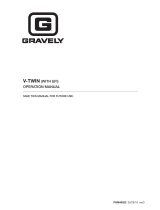 Gravely V-TWIN Operating instructions
Gravely V-TWIN Operating instructions
-
Black & Decker N003333 User manual
-
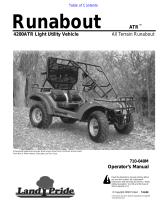 Land Pride ATR User manual
Land Pride ATR User manual
-
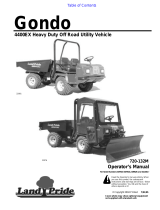 Land Pride 22076 User manual
Land Pride 22076 User manual
-
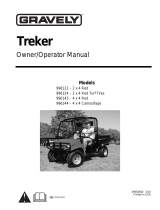 Gravely Treker 996124 Owner's/Operator's Manual
Gravely Treker 996124 Owner's/Operator's Manual
-
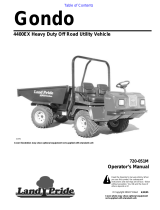 Land Pride Gondo 4400EX User manual
Land Pride Gondo 4400EX User manual
-
Honda Honda Engines GCV135 Owner's manual
-
Honda GXV160 Owner's manual
-
Honda WDP20X Owner's manual
-
Honda HRS216SDA User manual



















